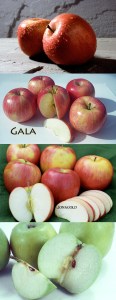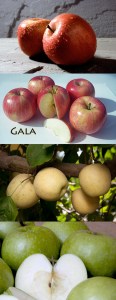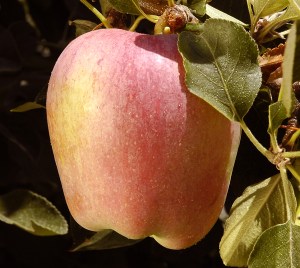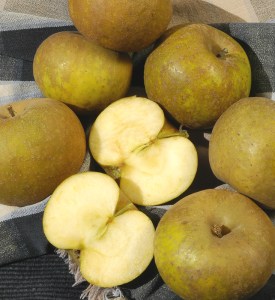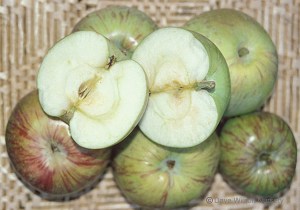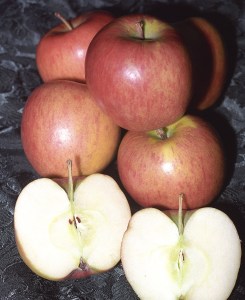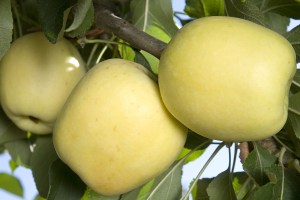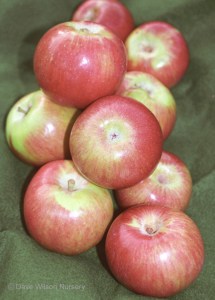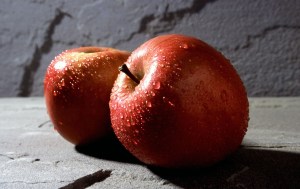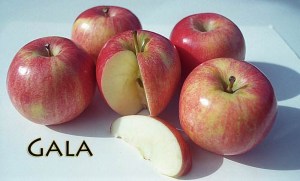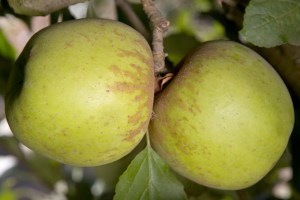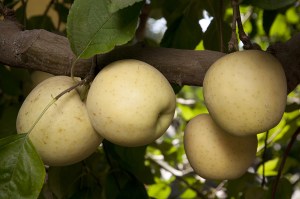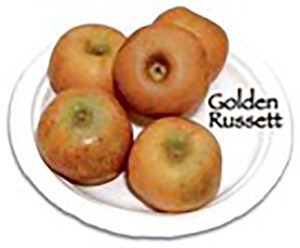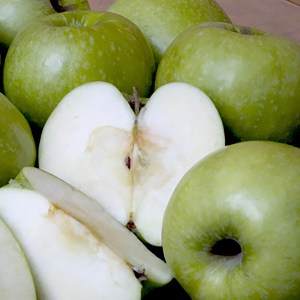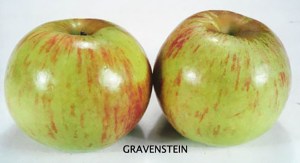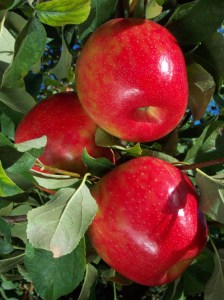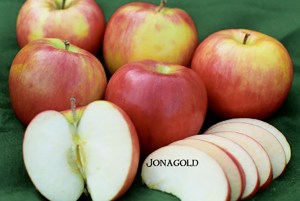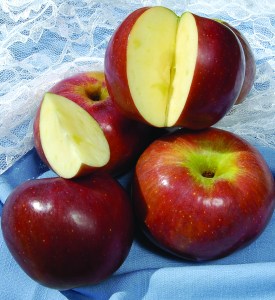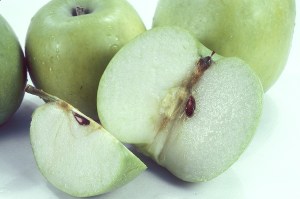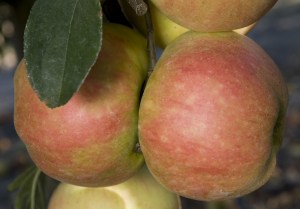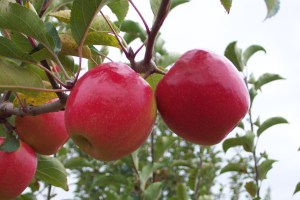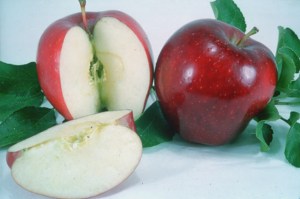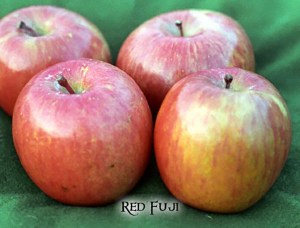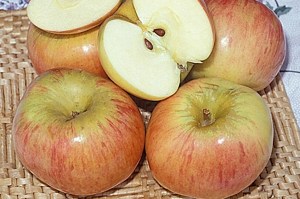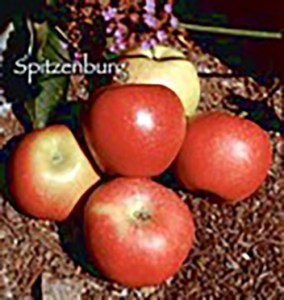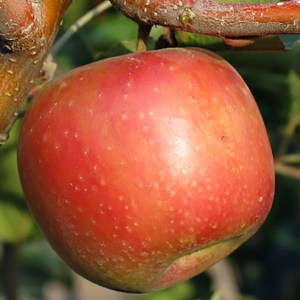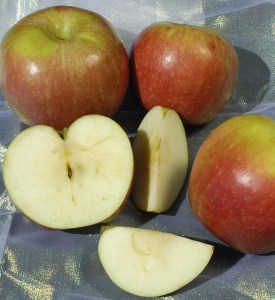Apples
Bare Root Apples
 Apple trees have existed before recorded history; ancient Phoenicians harvested wild apples. The apples of North America were brought over from Europe and were initially grown for making cider. Over the centuries, varieties were crossed to create the tasty varieties we grow today. Current popular varieties have also been bred in Australia and New Zealand. There are now over two thousand named clones. Commercial growers limit their crops to a few of these varieties. The home orchardist has a much greater selection. Bay Laurel offers some of the older varieties to augment your backyard orchard. Among these are Ashmead’s Kernal, Cox’s Orange Pippin, Golden Russet, Hudson's Golden Gem, Sierra Beauty, Spitzenburg and White Winter Permain.
Apple trees have existed before recorded history; ancient Phoenicians harvested wild apples. The apples of North America were brought over from Europe and were initially grown for making cider. Over the centuries, varieties were crossed to create the tasty varieties we grow today. Current popular varieties have also been bred in Australia and New Zealand. There are now over two thousand named clones. Commercial growers limit their crops to a few of these varieties. The home orchardist has a much greater selection. Bay Laurel offers some of the older varieties to augment your backyard orchard. Among these are Ashmead’s Kernal, Cox’s Orange Pippin, Golden Russet, Hudson's Golden Gem, Sierra Beauty, Spitzenburg and White Winter Permain.
Apples are now grown in every temperate region around the world. The trees are extremely adaptable and long-lived. Cold climates are generally the largest apple producers, but Anna, Dorsett Golden, Pettingill and Winter Banana thrive in climates as mild as Southern California. Fuji, Gordon, Pink Lady and White Winter Permain are other varieties that need minimal amounts of cold.
IMPORTANT: You may notice that the chill hours given here differ from other websites. The hours we list are based on the latest low chill trial information from Dave Wilson. Many apple varieties are very productive with chill hours well below what was originally thought necessary.
More About Apples
A traditional orchard is only one possible site for planting an apple. Dwarf trees (Garden Delicious and those varieties available on Geneva rootstock) are excellent small patio trees as they can easily be kept five or six feet tall. Apple trees make excellent espaliers (see the Basic Guide to Espaliering under the Growing Fruit Trees tab for details). An espalier can be trained into various shapes and is ideal for small or narrow spaces.
Choose an apple for your specific needs according to your climate, size of planting area, soil type and, of course, taste preference. Prune your tree for the first few years according to the desired size and shape. Keep in mind that apples are produced on spurs, small, thick twig-like growths on the branches which persist for many years. For maximum size, be sure to thin apples when they are still in the early stages of growth.
Apples are used for cider, drying and baking. A favorite recipe of ours is the Brandy-Rum Apple Cake, especially tasty for the holiday season. And, of course, there’s nothing like biting into a fresh juicy apple picked from your own tree on a brisk autumn morning!
Apple Rootstocks
The following rootstocks will determine the size of your tree – pruning is also a legitimate way to determine tree size. Keep in mind that the dwarfing types of root stocks produce very early and that they have specific requirements for their cultivation.
M 111
Excellent all-around rootstock for apples. Induces bearing at a younger age than standards. Tolerates wet soil, dry soil, poor soil, soil with high temperatures. Resists woolly apple aphids, collar rot and fireblight. Apparently resistant to oak root fungus. Trees dwarfed to 80-90% of standard, or about 15-25 ft.; can be further controlled with summer pruning. Very cold hardy, does not promote early bud break; used in Ontario, Canada. Rarely suckers.
GENEVA 935 (Gen.)
New dwarfing rootstock for apples. Trees dwarfed to eight to ten feet. Very resistant to fireblight and very cold hardy. A precocious bearer of large fruit, it resists crown rot and root rot and suckers very little.
M 7 (EMLA-7)
Dwarfing rootstock for apples. Unpruned tree height 2/3 the size of standard, or about 12-20 ft.; can be held to any height with summer pruning. Induces early and heavy bearing. Resistant to fireblight and powdery mildew, moderately resistant to collar rot. Has good anchorage. Very winter hardy, widely adapted.

